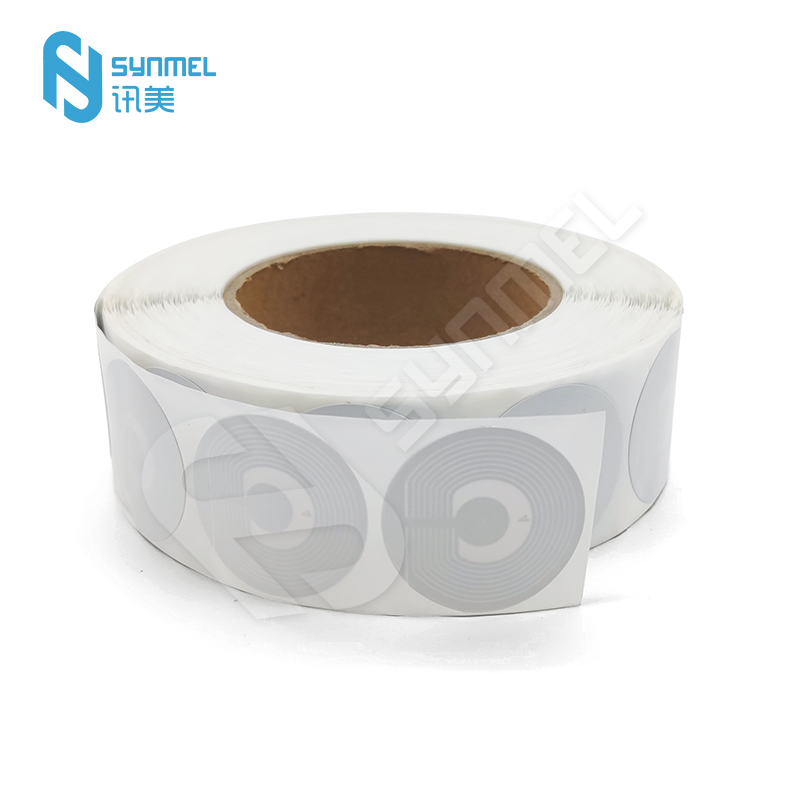- English
- Español
- Português
- русский
- Français
- 日本語
- Deutsch
- tiếng Việt
- Italiano
- Nederlands
- ภาษาไทย
- Polski
- 한국어
- Svenska
- magyar
- Malay
- বাংলা ভাষার
- Dansk
- Suomi
- हिन्दी
- Pilipino
- Türkçe
- Gaeilge
- العربية
- Indonesia
- Norsk
- تمل
- český
- ελληνικά
- український
- Javanese
- فارسی
- தமிழ்
- తెలుగు
- नेपाली
- Burmese
- български
- ລາວ
- Latine
- Қазақша
- Euskal
- Azərbaycan
- Slovenský jazyk
- Македонски
- Lietuvos
- Eesti Keel
- Română
- Slovenski
- मराठी
- Srpski језик
What is the difference between anti-theft RF labels and acousto-magnetic anti-theft labels?
2025-11-04
Anti-theft RF Labels and Acousto-Magnetic Tags (AMTA) are two common anti-theft technologies for merchandise. They differ significantly in their working principles, structure, applications, and advantages and disadvantages. Here are their main differences:
1. Working Principle
RF Label Principle: RF labels operate using electromagnetic waves, triggering a response through radio frequency signals. The label contains a miniature antenna and chip that receives and reflects radio frequency signals of a specific frequency, thus triggering an alarm system.
Frequency: The commonly used frequency is 8.2 MHz.
Acousto-Magnetic Tags Principle: Acousto-magnetic tags operate through the acousto-magnetic effect. When the tag receives a magnetic field signal of a specific frequency, the magnetic material inside resonates, triggering an alarm to sound or emit other alarms.
Frequency: The operating frequency of Acousto-Magnetic Tags is typically around 58 kHz.
2. Tag Structure
RF Labels: Generally thinner, usually consisting of an antenna and an electronic chip. The entire tag may be encapsulated in a paper or plastic shell for easy integration onto merchandise.
These tags typically do not have internal magnetic material; instead, they rely on the reflection and resonance of electromagnetic waves to trigger the alarm.
Acousto-Magnetic Tags: Acousto-magnetic tags are typically more robust and contain magnetic materials that resonate under a magnetic field. Their structure is relatively complex, sometimes slightly larger than RF tags, but they offer better interference resistance.
3. Applications
RFID Tags: Suitable for most retail locations, especially for electronics, books, clothing, and everyday items.
Suitable for thinner and lighter items due to their simpler structure and lower cost.
Acousto-Magnetic Tags: Primarily used for more robust, heavier items or items requiring special protection, such as bottled goods, alcoholic beverages, or high-value items in supermarkets. Acousto-magnetic tags are used in some high-end stores, especially in areas with high anti-theft requirements, to prevent theft.
4. Interference Resistance
RFID Tags: Sensitive to electromagnetic interference and may be affected by wireless signals from electronic devices, mobile phones, Wi-Fi, etc. Therefore, in high-interference environments, the efficiency of RF tags may decrease.
Acousto-Magnetic Tags: More resistant to interference. It is less susceptible to radio frequency interference because it relies on changes in magnetic fields rather than electromagnetic waves, thus exhibiting greater stability in environments with strong electromagnetic interference.
5. Cost
RFID Tags: Relatively inexpensive, suitable for mass production and use, especially for low-priced goods and high-frequency applications.
Acoustomagnetic Tags: Higher cost due to more complex manufacturing processes and the need for more magnetic components compared to RFID tags.
6. Detection Distance
RFID Tags: In well-designed anti-theft systems, the detection range of RFID tags is typically between 1-2 meters, with the specific range varying depending on the tag and system design.
Acoustomagnetic Tags: The effective detection distance of acoustomagnetic tags is usually shorter, typically within 0.5 meters. Therefore, acoustomagnetic tags may be more suitable for environments requiring closer detection.
7. Failure and Interference
RFID Tags: Due to their reliance on radio frequency signals, RFID tags may fail in certain environments, such as when obstructed by metal or liquids, where signal propagation may be severely interfered with.
Acousto-magnetic (AM) tags: AM tags are less affected by metals and liquids, making them less prone to failure in these environments.
8. Appearance and Ease of Use
RFID tags: Due to their thinner structure, RF tags can often be integrated into product packaging, making them difficult to detect.
Acousto-magnetic (AM) tags: Generally more conspicuous, especially when they don't match the size of the product's packaging, potentially affecting the product's appearance.
Depending on specific store needs, product type, and budget, merchants can choose the appropriate type of anti-theft RF label. If high interference resistance and anti-theft effectiveness are required, AM tags may be more suitable; if low cost and wide application are prioritized, RFID tags are a more common choice.




